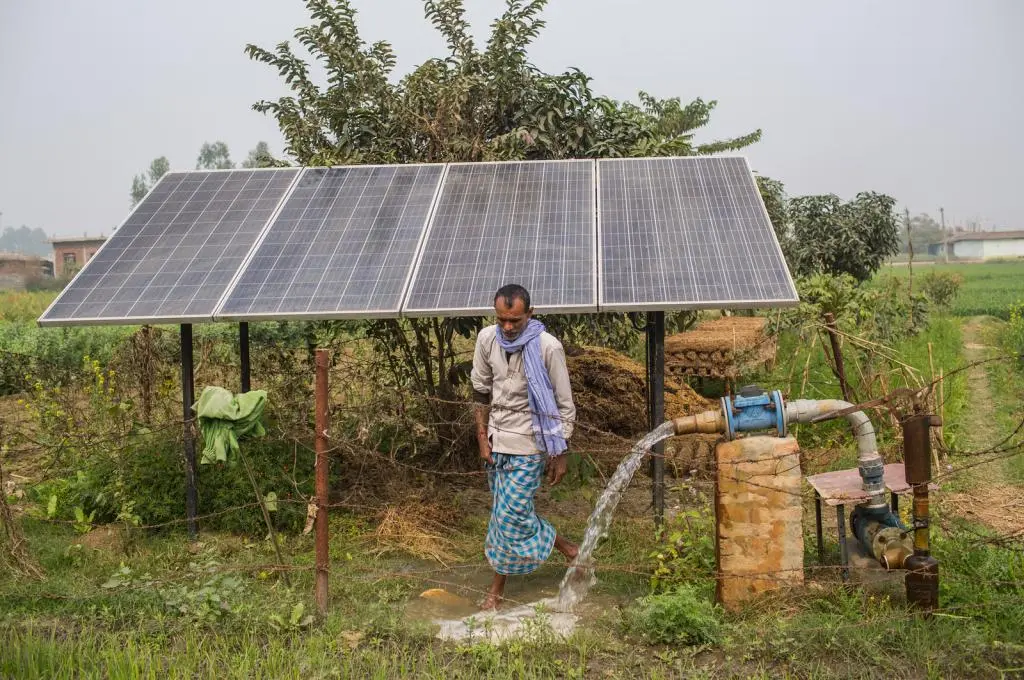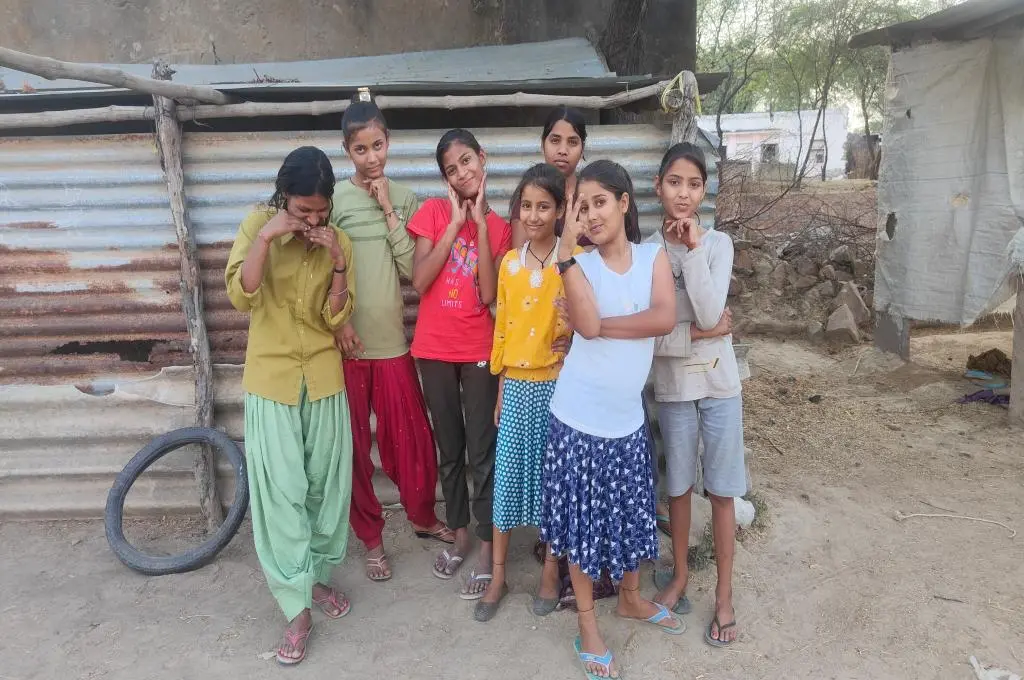The April heat wave in South and Southeast Asia this year was detrimental to vulnerable and disadvantaged communities, noted a report by an international team of scientists. It highlighted the problems caused by the heat wave, ranging from increased hospitalisations for heat stroke to forest fires and school closures.
Earlier in the year, the India Meteorological Department (IMD) declared February 2023 as the hottest February since 1901.
A study conducted by World Weather Attribution, following the unprecedented heat wave in South Asia in 2022, analysed the impact of climate change on the Indian heat wave and found that human-induced actions have made extreme heat events 30 times more likely in the region.
“As the climate crisis accelerates, the adoption and implementation of Heat Action Plans (HAPs) are becoming an urgent necessity in India to effectively address the impacts of heat waves,” said Vishwas Chitale, Senior Programme Lead at the Council on Energy, Environment and Water (CEEW), raising concern about exacerbating heat impacts.
What is a heat wave?
A heat wave is defined differently based on the geographical region. According to the IMD, in the plains, a heat wave is characterised by maximum temperatures reaching up to 40°C or more, while in coastal areas, it is when maximum temperatures reach 37°C or higher. In hilly regions, the threshold is set at 30°C or higher. Heat wave conditions in India are typically experienced between March and July, with acute heat waves occurring mostly between April to June.
Heat waves primarily affect the plains of northwest India, central and eastern regions, as well as the northern part of Peninsular India. In recent years, extreme temperatures are becoming more frequent across India, even in regions that have not historically experienced heat waves, such as Himachal Pradesh and Kerala. In 2019, heat waves affected 23 states, up from 19 in 2018. Record-breaking heat events are already a major health threat for vulnerable communities in India and other parts of the world.
“Ensuring well-developed and effective heat action plans to address heat waves is crucial in minimising their impact and saving lives. These measures work hand in hand to ensure the well-being of individuals during heat waves and contribute to their overall safety and resilience,” said Chitale.
HAPs play a vital role in protecting communities and saving lives during extreme heat events. Taking inspiration from Ahmedabad’s pioneering HAP in 2013, authorities at the city, state, and national levels in India are increasing their efforts to implement extreme heat warning systems and preparedness plans.
What is the impact of rising heat in India?
India’s vulnerability to extreme heat has the potential to significantly impact the country’s economy and health outcomes, with the poor bearing the brunt of these effects. Research from 2021 suggested that India will experience nearly half of the labour losses among the top 10 countries facing loss of productivity due to hot and humid conditions.
Approximately three-quarters of India’s workforce is employed in “heat-exposed” sectors, which contribute to about half of the country’s GDP. The International Labour Organisation projects a 5.8% increase in working hours lost due to heat stress by 2030, equivalent to 34 million jobs. These sectors include outdoor work such as agriculture, mining, and quarrying, as well as indoor occupations with limited air conditioning, including manufacturing, hospitality and transportation.
On health front, AP News reported in June this year that the heat wave in the northern state of Uttar Pradesh alone resulted in the deaths of 119 individuals from heat-related illnesses, with an additional 47 fatalities reported in neighbouring Bihar. During this time, Bihar’s Ballia district experienced temperatures approaching 45 degrees Celsius, with a relative humidity of 30-50%.
Indian government’s ‘climate vulnerability index’ may not fully capture the true impact of heat waves on the country’s development efforts.
While the northern regions of India are known for sweltering heat during the summer season, the IMD has reported consistent above-normal temperatures, with highs reaching 43.5 degrees Celsius (110 degrees Fahrenheit). As per the Heat Index Calculator by the National Oceanic and Atmospheric Administration, these conditions would feel like over 60˚C to the human body, indicating an extreme level of danger.
An April 2023 study conducted by a team of scholars led by Ramit Debnath at the University of Cambridge found that India’s heat wave in 2022 increased the vulnerability of almost 90% of Indians to various health issues, food shortages, and higher risks of death. The study, published in the PLOS Climate journal, suggests that the Indian government’s ‘climate vulnerability index’ may not fully capture the true impact of heat waves on the country’s development efforts.
The researchers combined the heat index with the vulnerability index and found that over 90% of the country is facing significant challenges related to livelihood capacity, food production, disease spread, and urban sustainability.
The study warns about the consequences of heat waves on India’s growing economy. It reveals that India is experiencing a convergence of multiple climate hazards, leading to frequent extreme weather events throughout most of the year. This situation poses a significant threat to 80% of the country’s 1.4 billion population due to the extreme heat.
It also strains India’s power grids, as the need for air conditioning and groundwater pumping increases, leading to higher energy demands.
Rising temperatures lead to increased usage of appliances such as air conditioners and groundwater pumps, resulting in electricity scarcity and impacting industrial operations that rely on power.
According to a recent CRISIL report, power demand in India is expected to grow by 9.5-10% compared to the previous fiscal year, marking a decade-high growth rate and nearly double the 20-year average.
“Next fiscal year, we can expect a significant increase in power demand due to a hotter-than-usual summer and the likelihood of multiple heat waves,” Chitale told Mongabay India. “Despite two years of strong growth, power demand is projected to rise at a rate of 5.5-6%, with the first half of the year experiencing even higher growth,” he added.

What is a Heat Action Plan?
Heat Action Plan or HAP is a policy document prepared to effectively understand and respond to the harmful effects of heat waves.
HAPs are prepared by the government authorities at various levels and serve as a comprehensive guide, outlining measures to prepare for, respond to, recover from and learn from extreme heat events.
Aditya Valiathan Pillai, associate fellow at the Centre for Policy Research (CPR) and one of the co-authors of the CPR report on HAPs told Mongabay India, “HAP is an advisory document that’s put forward by state and local governments that explains what needs to be done to prepare for a heat wave, what is to be done after heat wave is declared, and put forth a range of emergency responses and course corrective actions to learn from the heat wave experience so that the HAP can be refined.”
The primary purpose of these plans is to protect vulnerable populations and direct essential resources, including healthcare, financial support, information, and infrastructure, to those most at risk during extreme heat conditions.
“These plans are multi-sectoral in nature. They involve implementation from multiple government departments simultaneously before enduring heat waves and the main idea behind them is to make sure that during extreme temperatures, there is no loss of life. More recently, some HAPs have also tried to make sure that there’s a limit to the economic damage that is potentially caused by heat waves,” said Pillai.
India’s national government is working with 23 heat wave-prone states and over 130 cities and districts to develop and implement HAPs across the country. The first Heat Action Plan was launched in 2013 by the Ahmedabad Municipal Corporation, which went on to become a template for other regions.
HAPs play a crucial role in raising awareness and providing guidance for individuals and communities to proactively safeguard their well-being against heat waves through a balanced mix of short and long-term actions.
Short-term HAPs primarily address immediate responses to heat waves and aim to provide rapid relief and support during extreme heat events. They often include measures like healthcare assistance, public awareness campaigns, provision of cool shelters, and adjustments in work or school schedules to minimize heat exposure. On the other hand, long-term HAPs focus on sustainable strategies that have an impact beyond a single heat season. These plans aim to address the root causes of heat vulnerability and build resilience against future heat waves.
The plans incorporate a heat wave warning system to ensure that timely alerts reach vulnerable populations. They facilitate coordination between different government departments, integrating efforts to address healthcare needs, adjust work hours, and implement strategies for behaviour change. HAPs also emphasise on solutions such as investing in infrastructure, adopting climate-resilient agricultural practices, and implementing sustainable urban planning measures like creating green corridors and cool roofs.
By implementing the short-term and long-term measures prescribed in HAPs, governments can reduce the impact of heat waves on human lives and the economy. However, it is unclear to what extent these action plans are being implemented.
How effective are the current Heat Action Plans?
CPR has conducted a comprehensive assessment, where it analysed all 37 HAPs across 18 states, revealing the health-related risks and impact on vulnerable populations and agriculture. The CPR report emphasised the urgent need to address the escalating heat wave problem and the effectiveness of HAPs in mitigating its adverse effects.
The report finds significant shortcomings in many of these plans, indicating a lack of consideration for local context, inadequate funding, and poor targeting of vulnerable groups. The early heat waves of 2023 have brought attention to India’s preparedness for extreme conditions.
According to Pillai, “We have found major gaps in all 37 analysed HAPs that likely undermine their effectiveness. For instance, only two plans include vulnerability assessments, which are crucial for identifying and providing support to those who are least equipped to cope.”
Pillai further said, “Equally concerning is the fact that only three out of 37 plans have identified funding for their proposed measures. This is problematic considering that most HAPs recommend costly changes to infrastructure, city planning, and buildings.”
The effectiveness of India’s HAPs in adapting to recent heat waves is still being assessed, with varying anecdotal evidence suggesting different levels of implementation and impact.
According to Pillai, “There is a need for comprehensive evaluation studies to understand the effectiveness of these plans. Currently, there is limited data available to determine the extent to which HAPs are functioning effectively and addressing the challenges posed by heat waves.”
To ensure the ongoing effectiveness of HAPs, it is essential to monitor their spread and implementation across cities and states.
He also highlights the importance of conducting implementation-evaluation studies and all-cause mortality studies before and after the implementation of HAPs. “Such studies can provide insights into the effectiveness of these plans and their impact on reducing heat-related mortality. However, due to the relative newness of HAPs in many jurisdictions, including states and local governments, there is a lack of comprehensive understanding of how these plans are operating and their overall effectiveness,” adds Pillai.
To ensure the ongoing effectiveness of HAPs, it is essential to monitor their spread and implementation across cities and states. Rigorous evaluation studies should be conducted to assess their impact and effectiveness in addressing the challenges posed by extreme heat. This will provide valuable insights for policymakers and stakeholders to refine and strengthen HAPs, ensuring they effectively adapt to and mitigate the impacts of heat waves in India.
Can HAPs be strengthened?
Pillai, addressing the question, listed a multi-faceted approach to address various challenges and ensure their effectiveness in combating heat waves. He lists adequate financing, establishing legal foundations and accountability, promoting a participatory approach and taking a long-term perspective of the issue to strengthen HAPs.
Sufficient funding must be allocated to support the successful execution of the HAPs and their associated measures, he said. Then, providing a legal framework for HAPs enables monitoring of implementation, effectiveness, and impact. Review mechanisms involving stakeholders and vulnerable populations can contribute to increased transparency and accountability.
Including input and guidance from affected communities and stakeholder groups in the development and revision of HAPs ensures a more participatory and inclusive approach. This helps address the specific needs and concerns of those directly impacted by extreme heat.
HAPs should consider long-term climate projections and models to effectively address the evolving challenges of heat waves. Planning for the future, in addition to the present, is crucial to mitigate the increasing risks associated with rising temperatures, he noted.
This article was originally published on Mongabay India.
—
Citation:
Zachariah, M., Vautard, R., Chandrasekaran, R., Chaithra, ST., Kimutai, J., Arulalan, T., AchutaRao, K., Barnes, C., Singh, R., Vahlberg, M., Arrgihi, J., Raju, E., Sharma, U., Ogra, A., Vaddhanaphuti, C., Bahinipati, C. S., Tschakert, P., Pereira Marghidan, C., Mondal, A., Schwingshackl, C., Philip, S., Otto, F. (2023). Extreme humid heat in South and Southeast Asia in April 2023, largely driven by climate change, detrimental to vulnerable and disadvantaged communities,. doi: https://doi.org/10.25561/104092
Pillai, A. V., Dalal, T. (2023). How Is India Adapting to Heatwaves?: An Assessment of Heat Action Plans With Insights for Transformative Climate Action
Parsons, L.A., Shindell, D., Tigchelaar, M. et al. Increased labor losses and decreased adaptation potential in a warmer world. Nat Commun 12, 7286 (2021). https://doi.org/10.1038/s41467-021-27328-y
Woetzel, J., Pinner. D., Samandari. H., Gupta. R., Engel. H., Krishnan. M., Powis. C. (2020) Will India get too hot to work?, McKinsey & Company. https://www.mckinsey.com/capabilities/sustainability/our-insights/will-india-get-too-hot-to-work
Kjellstrom .T., Maître. N., Saget. C., Otto. M., Karimova. T. (2019). https://www.ilo.org/global/publications/books/WCMS_711919/lang–en/index.htm#:~:text=It%20is%20one%20of%20the,work%20at%20a%20slower%20pace.
Debnath R, Bardhan R, Bell ML (2023) Lethal heatwaves are challenging India’s sustainable development. PLOS Clim 2(4): e0000156. https://doi.org/10.1371/journal.pclm.0000156





